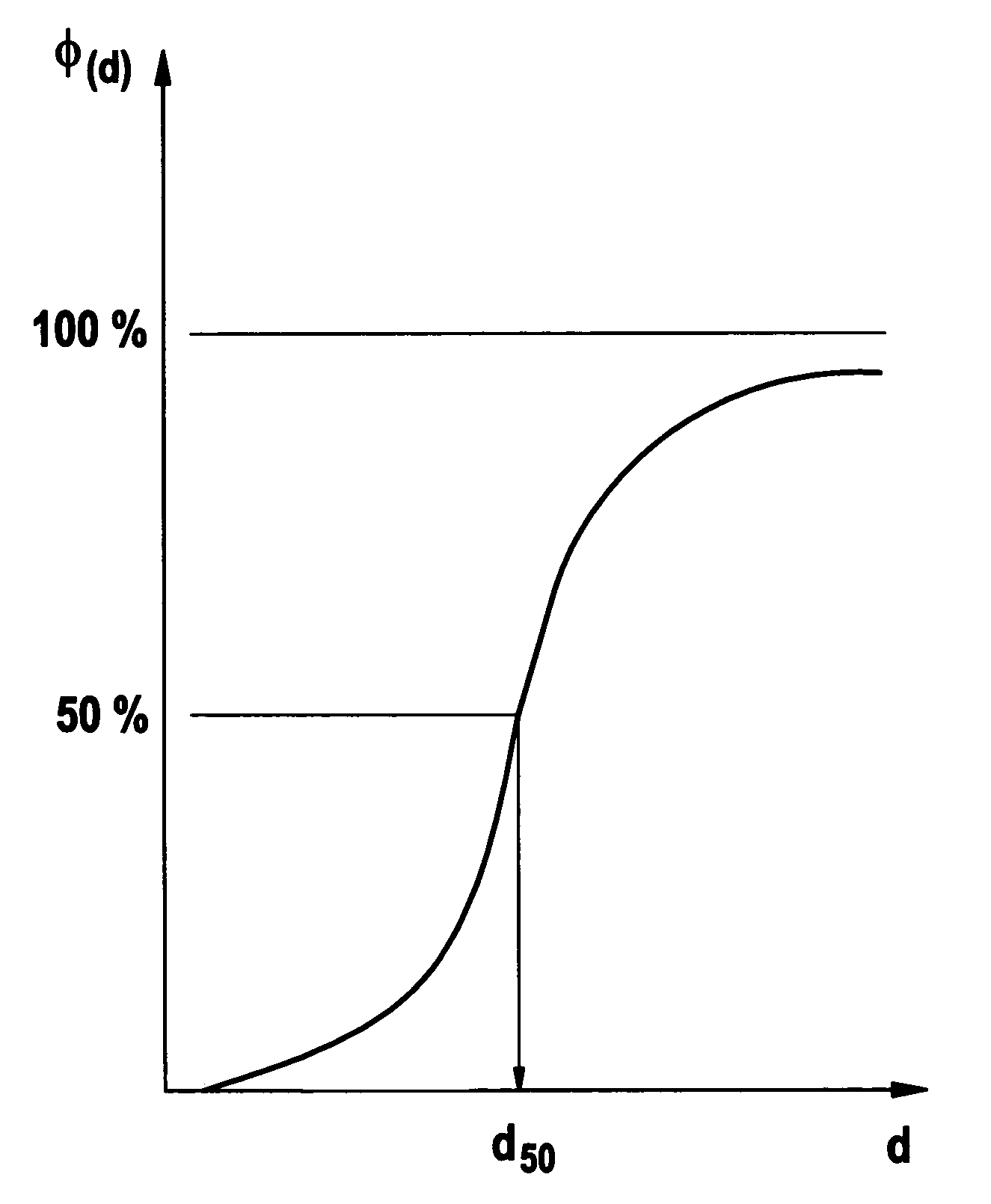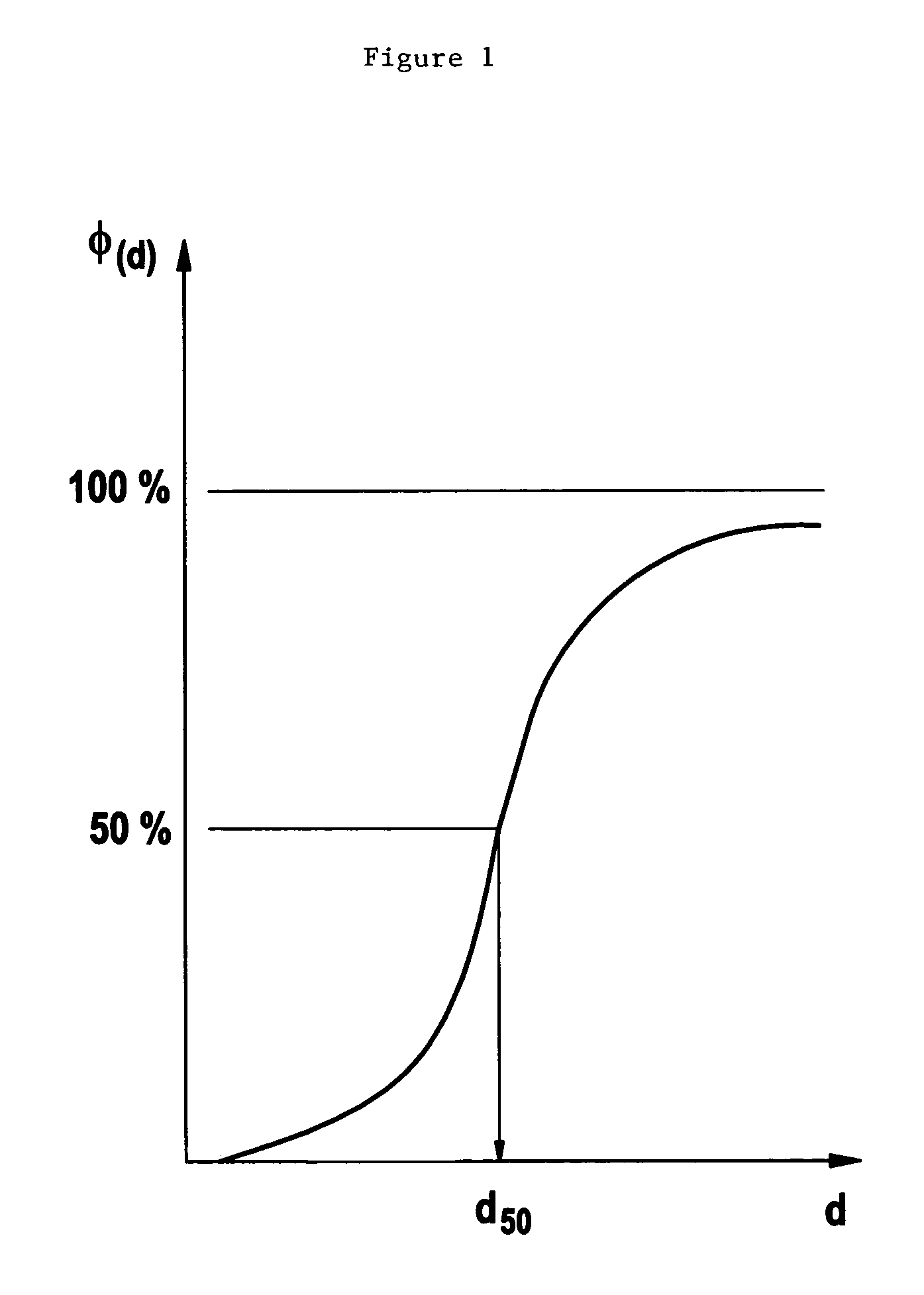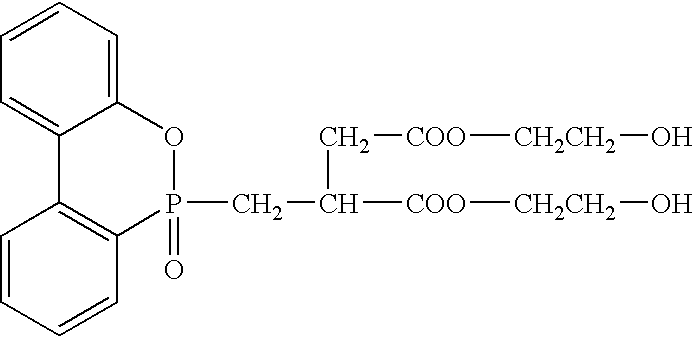Single- or multilayer thermoplastic polymer film capable of structuring by means of electromagnetic radiation, process for its production, and its use
a thermoplastic polymer and single-layer technology, applied in the field of single-layer, oriented film, can solve the problems of low flexibility and precision, large separation between conductor tracks, high cost associated with these processes, etc., and achieves cost-effective production, good orientability, good mechanical properties
- Summary
- Abstract
- Description
- Claims
- Application Information
AI Technical Summary
Benefits of technology
Problems solved by technology
Method used
Image
Examples
example 1
[0090]An ABC film with a base layer thickness of 94 μm and 3 μm for each of the outer layers A and C was produced as stated above.
[0091]Raw material mixture for outer layer A: 50% by weight of MB1; 10% by weight of MB2; 10% by weight of MB4; 20% by weight of P1; 10% by weight of P3
[0092]Raw material mixture for base layer B: 100% of P1
[0093]Raw material mixture for outer layer C: 20% by weight of MB2; 80% by weight of P1
example 2
[0094]An ABC film with a base layer thickness of 94 μm and 3 μm for each of the outer layers A and C was produced as stated above.
[0095]Raw material mixture for outer layer A: 60% by weight of MB3; 10% by weight of MB2; 10% by weight of MB5; 12% by weight of P1; 8% by weight of P4
[0096]Raw material mixture for base layer B: 100% of P1
[0097]Raw material mixture for outer layer C: 20% by weight of MB2; 80% by weight of P1
example 3
[0098]An ABC film was produced with dimensions the same as those in example 1.
[0099]Raw material mixture for outer layer A: 60% by weight of MB3; 10% by weight of MB2; 12% by weight of P1; 18% by weight of P4
[0100]Raw material mixture for base layer B: 100% of P1
[0101]Raw material mixture for outer layer C: 20% by weight of MB2; 80% by weight of P1
PUM
| Property | Measurement | Unit |
|---|---|---|
| thickness | aaaaa | aaaaa |
| thickness | aaaaa | aaaaa |
| thickness | aaaaa | aaaaa |
Abstract
Description
Claims
Application Information
 Login to View More
Login to View More - R&D
- Intellectual Property
- Life Sciences
- Materials
- Tech Scout
- Unparalleled Data Quality
- Higher Quality Content
- 60% Fewer Hallucinations
Browse by: Latest US Patents, China's latest patents, Technical Efficacy Thesaurus, Application Domain, Technology Topic, Popular Technical Reports.
© 2025 PatSnap. All rights reserved.Legal|Privacy policy|Modern Slavery Act Transparency Statement|Sitemap|About US| Contact US: help@patsnap.com



